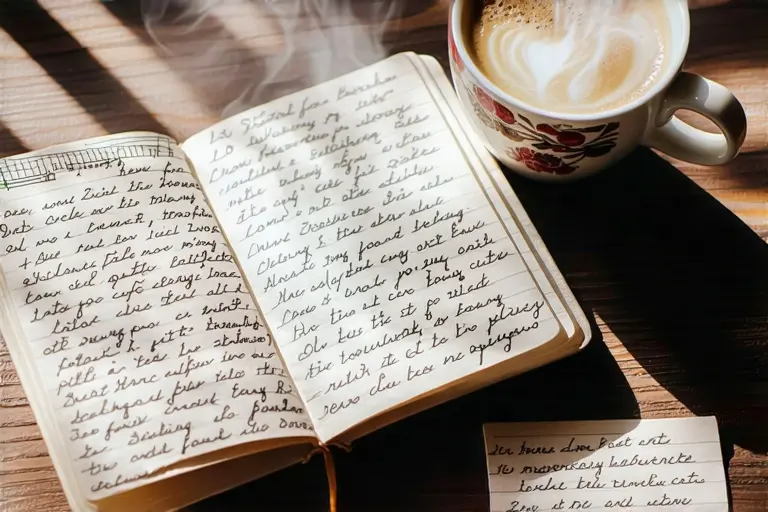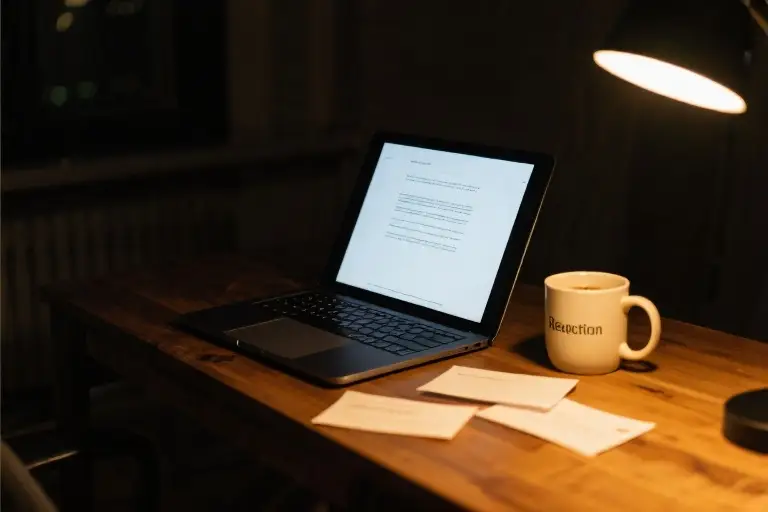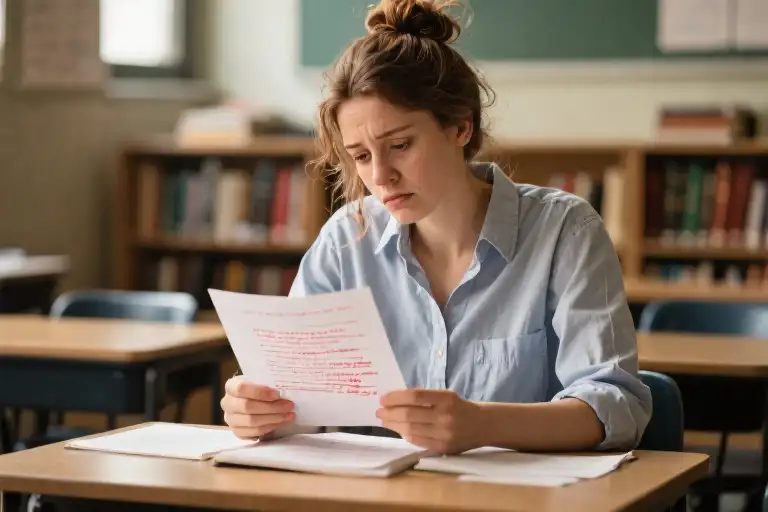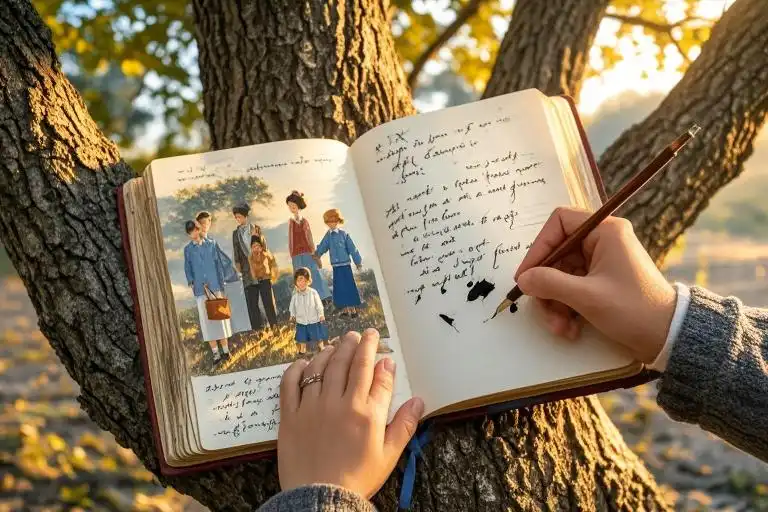A symphony requires ninety musicians, an oil painting demands months of labor, but poetry? It only needs that fleeting thought you had over breakfast. While other art forms build barriers of expertise and equipment, poetry slips quietly into your morning coffee steam, your commute daydreams, the sigh you exhale before sleep. Yet why do so many feel this most accessible art remains locked behind academic gates?
This persistent myth of poetry’s inaccessibility stems from a fundamental misunderstanding. We’ve been conditioned to view poems as cryptic puzzles rather than what they truly are: intensified moments of human experience using the same vocabulary as grocery lists and text messages. The truth is, you already possess everything required to engage with poetry—you’ve been training for it since your first spoken word.
Consider the numbers: the average person speaks approximately 16,000 words daily. Like raw clay, these words hold infinite potential. Poets simply knead this universal material with deliberate attention, transforming ordinary language into what Mark Doty beautifully calls “voiceprints”—unmistakable markers of human consciousness. From Robert Frost’s deceptively simple country dialogues to Elizabeth Bishop’s meticulously observed landscapes, great poetry demonstrates how everyday language becomes art through selective pressure and careful arrangement.
The magic lies not in special ingredients, but in perspective. That crumpled receipt in your pocket could contain a sonnet’s worth of human connection. The argument you overheard at the bus stop might hold the rhythm of a villanelle. Poetry doesn’t demand you visit museums or concert halls—it waits patiently in your unremarkable Tuesday, ready to be noticed.
In the following sections, we’ll dismantle poetry’s intimidating reputation piece by piece. You’ll discover how three simple techniques can alchemize mundane observations into poetic gold, why your unique life experiences already qualify you as a poet, and how engaging with poetry can become as natural as humming a favorite song. The distance between “reader” and “poet” is shorter than you think—often just the length of a deep breath and the courage to see your world with poetic eyes.
Remember: every great poem began exactly where you are right now—with an ordinary person paying extraordinary attention.
Why a Single Pen Can Redefine Artistic Rules
While painters meticulously mix pigments and musicians tune their instruments, poets wield a tool so commonplace it’s often overlooked: language. This fundamental difference makes poetry the most democratic of all art forms. Unlike oil paintings requiring specialized supplies or symphonies demanding concert halls, poetry happens wherever words exist—which is everywhere.
The Material Cost of Artistic Expression
Consider the tangible investments required across creative disciplines:
| Art Form | Required Materials | Typical Setting | Barrier to Entry |
|---|---|---|---|
| Oil Painting | Canvases, brushes, solvents, easel | Studio space | $$ |
| Classical Music | Instruments, sheet music, performance venues | Concert halls | $$ |
| Poetry | Paper/device, writing implement | Anywhere | $ |
This accessibility explains why poetry flourishes in unexpected places—hospital waiting rooms, subway platforms, kitchen tables at 3 AM. The poet’s studio is as portable as human thought itself.
Your Brain’s Built-In Poetry Workshop
Neuroscience reveals our innate poetic capacity through the Broca’s area, the brain region governing language production. Unlike specialized musical or visual artistic skills requiring extensive training, we begin practicing poetry’s raw materials as toddlers forming first sentences. Every conversation, grocery list, or text message exercises the same mental muscles poets use, just with different intentionality.
Research from the University of Liverpool shows that:
- The average person processes ~16,000 words daily
- Poetic language activates additional neural pathways for emotional processing
- Metaphor comprehension utilizes both linguistic and visual brain regions
This means your mind already contains the hardware for poetry—it’s simply awaiting the software update of creative attention.
Poetry’s Anywhere Revolution
Three ordinary locations where poetry routinely emerges:
- The Bedside
Morning thoughts often arrive in raw, associative patterns resembling poetic lines. Poet William Stafford famously wrote first drafts upon waking, capturing the twilight state between sleep and consciousness. - Public Transit
The observational poetry of Frank O’Hara demonstrates how commuting environments—overheard dialogues, shifting cityscapes—become readymade material. His “Lunch Poems” were scribbled during Manhattan lunch breaks. - Supermarket Aisles
Contemporary poets like Ross Gay find lyricism in produce sections, transforming banal shopping lists into meditations on abundance and desire (“Catalog of Unabashed Gratitude”).
As these examples show, poetry doesn’t demand sacred spaces or rare tools. It requires only what you already possess: language, attention, and the courage to see the extraordinary woven through ordinary moments. The true revolution lies in recognizing that the materials for art surround you constantly—in your speech patterns, daydreams, even in this sentence you’re reading now.
Next: Discover how poets perform linguistic alchemy by turning grocery lists into art…
Three Magical Tricks to Turn Grocery Lists into Poetry
The Alchemy of Ordinary Words
Every poet starts with the same raw material you use to order coffee or text a friend: plain, unassuming words. The magic lies not in the words themselves, but in how they’re arranged—like turning flour, water, and yeast into crusty sourdough through patient kneading. Here’s how literary alchemists transform the mundane into the extraordinary.
Technique 1: Microscopic Observation (Elizabeth Bishop’s “The Fish”)
Bishop didn’t just see a fish—she noticed:
- “Brown skin hung in strips / like ancient wallpaper”
- The “five old pieces of fish-line” in its jaw like “medals with their ribbons”
- Eyes that “shifted a little, but not / to return my stare”
Try this: Next time you’re washing dishes, describe one bubble’s rainbow swirl as precisely as a scientist documenting a new species.
Technique 2: Grammatical Rebellion (Emily Dickinson’s Dashes)
Dickinson’s unconventional punctuation creates emotional cadence:
“I felt a Funeral—in my Brain—
And Mourners—to and fro—
Kept treading—treading—till it seemed
That Sense was breaking through—”
The staccato dashes mimic funeral footsteps while breaking grammatical rules we learned in school.
Your turn: Write a three-line poem where punctuation does the emotional heavy lifting—maybe commas that slow like tired footsteps, or exclamation points that vibrate with joy!
Technique 3: Sensory Cross-Wiring (“The Wind’s Fingerprint”)
Great poets constantly hijack our senses:
- “Taste the sunlight” (visual → gustatory)
- “Hear the purple of twilight” (visual → auditory)
- “The scent of loneliness” (emotional → olfactory)
Workshop: Pick a common object (a stapler, a subway seat) and describe it using the “wrong” sense:
- How would your morning coffee smell if it had a sound?
- What shape would your exhaustion be after a long day?
From Supermarket to Sonnet: A Before/After Demo
| Grocery List | Poetic Transformation |
|---|---|
| Milk, eggs, bread | “The moon spills milk across the kitchen floor / Eggs crack open tomorrow’s golden door” |
| Dentist 3pm | “The drill’s silver song / excavating childhood / in a novocaine haze” |
The Hidden Poetry in Your Day
- Morning: Your foggy bathroom mirror isn’t just steamed up—it’s “breathing winter onto glass”
- Commute: That crowded subway car? “A can of sardines with smartphone glow”
- Work: Your overflowing inbox becomes “alphabetical hydra / heads multiplying with each reply”
Remember: Poetry isn’t about fancy words—it’s about seeing the familiar through tilted glasses. As Nobel laureate Czesław Miłosz wrote: “The purpose of poetry is to remind us how difficult it is to remain just one person.”
The Poet’s Heart Under a Stethoscope: Frost and Bishop’s Vocal Fingerprints
Every great poet leaves traces of their unique voice like a vocal fingerprint pressed into language. When we examine Robert Frost’s Mending Wall and Elizabeth Bishop’s One Art, we uncover two masterful yet radically different approaches to transforming ordinary words into extraordinary poetry.
The Illusion of Simplicity in Mending Wall
Frost’s genius lies in crafting poems that sound like casual New England conversations while containing profound philosophical questions. In Mending Wall, he constructs what critics call a “pseudo-dialogue” – a seemingly simple exchange between neighbors repairing a stone wall that subtly questions the very nature of human boundaries.
Notice how Frost’s signature techniques create his unmistakable voice:
- Colloquial rhythm: “Something there is that doesn’t love a wall” mimics speech patterns
- Strategic repetition: The phrase “Good fences make good neighbors” appears twice with shifting contexts
- Nature as metaphor: Frozen ground becomes a canvas for exploring human relationships
This apparent simplicity is Frost’s carefully constructed illusion. As he once said: “Poetry begins in delight and ends in wisdom.”
Bishop’s Precision in One Art
Where Frost embraces conversational ambiguity, Bishop demonstrates surgical precision in One Art. This villanelle about loss gradually escalates from misplaced keys to profound personal grief, with the rigid form acting as emotional scaffolding.
Bishop’s vocal fingerprints include:
- Microscopic observation: “The art of losing isn’t hard to master” builds through carefully measured examples
- Form mirroring content: The repeating villanelle structure mimics the cyclical nature of loss
- Understatement: The final broken line “Write it!” reveals more through restraint than elaboration
Voice Recognition Challenge
Let’s test your poetic ear with these uncredited lines. Can you identify the poet?
- “The way a crow / Shook down on me / The dust of snow”
- “The art of losing isn’t hard to master”
- “I have been one acquainted with the night”
- “—Even losing you (the joking voice, a gesture / I love)”
(Answers: 1-Frost, 2-Bishop, 3-Frost, 4-Bishop)
This exercise reveals how distinctive poetic voices become when we pay attention. Frost’s work often features nature as philosophical metaphor, while Bishop’s precision transforms personal experience into universal truth.
Your Turn: Finding Your Vocal Fingerprint
Every poet develops unique identifiers in their work. Try this exercise to discover yours:
- Write three observations about your current environment
- Rewrite each observation three different ways:
- As Frost might (colloquial with deeper implications)
- As Bishop might (precise with emotional restraint)
- In your natural voice
- Circle phrases that feel authentically “you”
Remember: Your ordinary words contain extraordinary potential. As these masters show, what matters isn’t the complexity of your vocabulary, but the authenticity of your perspective.
Your Poem Awaits: Turning the Ordinary into Poetry
You’ve just walked through the gallery of poetic mastery—seeing how Frost captured entire philosophies in country fences, how Bishop transformed a caught fish into a meditation on survival. Now it’s your turn. That coffee cup on your desk, the bus ticket crumpled in your pocket, the way sunlight slants across your kitchen floor at 4:37 PM—these are your raw materials. Poetry isn’t about grand subjects; it’s about grand attention.
The 5-Detail Observation Drill
Let’s start with what’s literally within reach:
- Pick the third object to your left (Yes, right now—this article will wait)
- Engage each sense for one minute:
- Sight: Note color variations you’d normally ignore (that “white” mug actually holds 7 shades)
- Touch: Texture temperature memories (the chip on the rim tells a story)
- Sound: What it would whisper if amplified 100x (your keys might jingle like wind chimes)
- Smell/Taste: Even seemingly odorless objects have scent associations (that notebook smells like school anxiety and new possibilities)
- Record 5 specific details without using adjectives:
- Instead of “old book,” try “page corners curl like autumn leaves refusing to fall”
Example from my desk’s third object—a wireless mouse:
- The scroll wheel clicks like a miniature rollercoaster climbing its track
- Matte finish holds fingerprints in temporary constellations
- Red LED pulse mimics a resting heartbeat
- Left-click button has developed a slight depression from 11,304 confirmations
- When shaken, the internal battery rolls with the sound of a marble in a tin can
The Poetry Equation: (Mundane Moment) × (Unexpected Connection) = Poem
Now, let’s alchemize those observations using three accessible techniques:
1. The Reverse Metaphor
Take a universal concept and anchor it to your specific detail:
- Conventional: “My mouse is like a tired worker” (cliché)
- Reversed: “Office burnout smells like plastic heated by continuous left-clicks”
2. The Grammar Rebellion
Break one syntactic rule with purpose:
- Expected: “I work until the battery dies”
- Rebellion: “Work. Until. Battery. Dies.” (staccato rhythm mirrors exhaustion)
3. The Sense Swap
Crosswire sensory experiences:
- Literal: “The LED light blinks”
- Swapped: “The mouse coughs red into the twilight”
Your Anonymous Poetry Laboratory
Here’s a safe space to experiment—no “good” or “bad,” just noticing and transforming:
[OBJECT]: Wristwatch
[OBSERVATIONS]:
1. Second hand stutters at 4 o'clock position
2. Leather band remembers every summer sweat
3. Crystal face reflects ceiling fan in miniature
4. 3:00 marker faded from constant thumb rubs
5. Crown stem turns with the resistance of a secret
[POEM DRAFT]:
"My watch eats seconds differently at 4 PM /
its teeth worn from chewing time /
I wind the stem tight / until it confesses /
where all those lost minutes went"Why This Works: The Neuroscience of Noticing
When you practice this depth of observation:
- Mirror neurons activate as if experiencing the object’s “life” (your mouse’s “depression” becomes palpable)
- Default mode network quiets, reducing self-judgment about “being poetic”
- Dopamine spikes occur with each unexpected connection (that “rollercoaster” scroll wheel)
From Draft to Poem: The 15-Minute Polish
Set a timer and:
- Cut 30% (remove explanations—trust your images)
- Add one surprising verb (instead of “the light blinks,” try “the light stutters”)
- Break one line unexpectedly (place a pause where breath catches)
- Read aloud twice: First normally, then whispering—listen for musicality
Remember: A poem isn’t finished; it’s abandoned. Yours is already valid.
The Invitation
Your life is an ongoing poetry collection waiting to be noticed. That thing you almost threw away yesterday? It’s a stanza. The argument you replayed in the shower? A potential villanelle. Today’s challenge:
- Text yourself 3 ordinary observations before sunset
- Before bed, transform one using our equation
- Sleep knowing you’ve joined the ancient conversation of poets—no MFA required
As Mary Oliver wrote: “Attention is the beginning of devotion.” Your devotion to the everyday is where poetry begins.
When Frost Watched the Frosted Apple Tree
That apple tree standing in Robert Frost’s yard had no idea it was about to become art. The way morning light caught on its icy branches, the quiet crackle of frozen sap beneath the bark—these were just another winter morning’s details until a poet’s attention transformed them into something timeless. This is the quiet alchemy of poetry: your daily life already contains everything you need to create it.
The Unseen Poetry Around You
Right now, look around. The coffee stain on your desk shaped like a continent you’ve never visited. The way your neighbor’s laughter carries through thin apartment walls. The rhythmic tap of rain against the window that almost sounds like Morse code. These aren’t just background noise—they’re raw materials waiting to become your “voiceprint,” as Mark Doty described it.
Consider how Elizabeth Bishop turned watching a fish into a meditation on survival (“his brown skin hung in strips / like ancient wallpaper”). Or how Frost made stone walls in New England speak volumes about human nature (“Something there is that doesn’t love a wall”). Their genius wasn’t in finding extraordinary subjects, but in seeing the extraordinary within ordinary moments.
Your Turn: Two Lines That Change Everything
Here’s the secret no one tells beginners about how to write poetry: your first draft doesn’t need to be good. It just needs to be true. Try this:
- Name one utterly mundane thing you see right now (e.g., “the charging cable coiled like a sleeping snake”)
- Add one surprising connection (e.g., “waiting to strike when my battery is vulnerable”)
Suddenly, you’re not just describing—you’re interpreting. That’s where poetry lives.
Why Your Voice Matters
When you write:
"Night bus windows reflect
faces stacked like sad origami"You’ve done something no algorithm could replicate. The specificity of “night bus” instead of just “bus,” the tactile surprise of “sad origami”—this is your neural pathways and life experiences crystallized into language. It’s why we still read centuries-old poems: not because they’re perfect, but because they’re unmistakably human.
The Challenge: Your Two-Line Time Capsule
Before you leave this page, try capturing your present moment in two lines. Here’s mine:
"My cursor blinks impatiently—
a tiny metronome keeping time with my doubts"Post yours below. Not because it needs to be “great poetry,” but because in twenty years, these lines will transport you back to this exact second of your life more vividly than any photo could. That’s the real power of ordinary words becoming art.
“The poem is the point where the strength of words failed and yet became irresistible.”
—Rainer Maria Rilke





